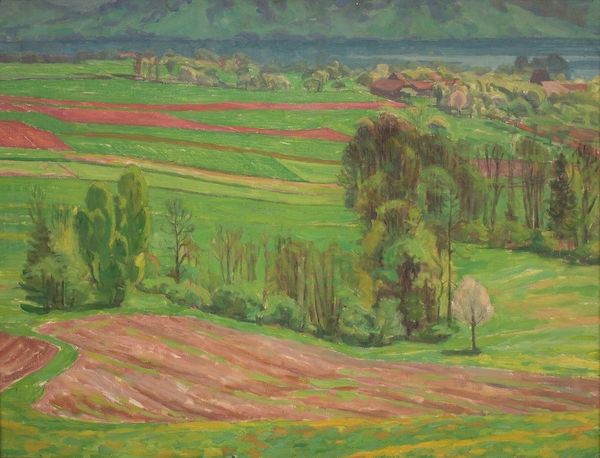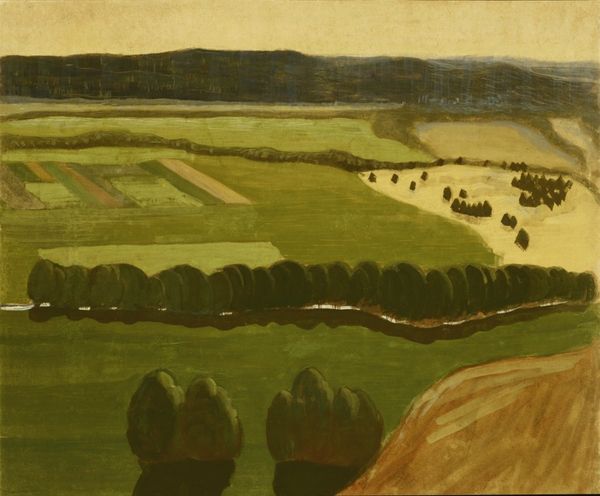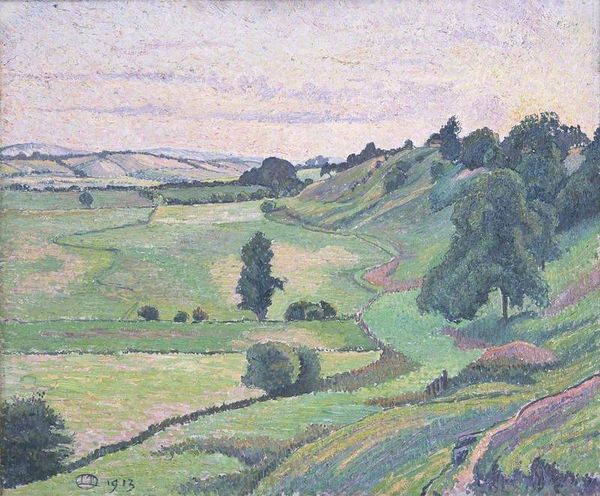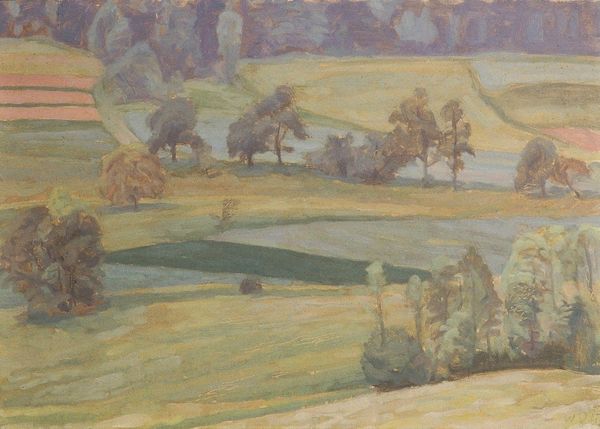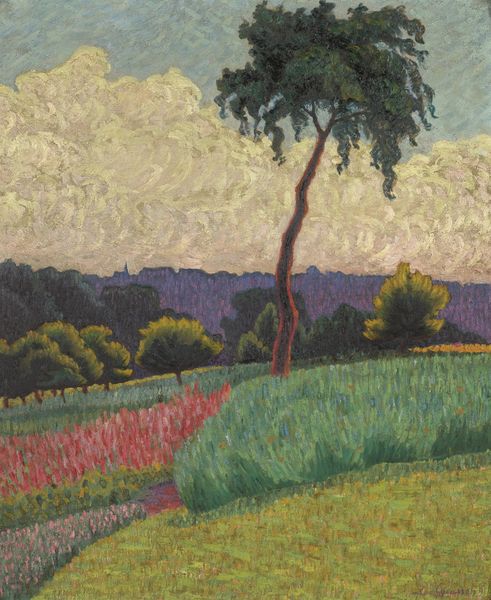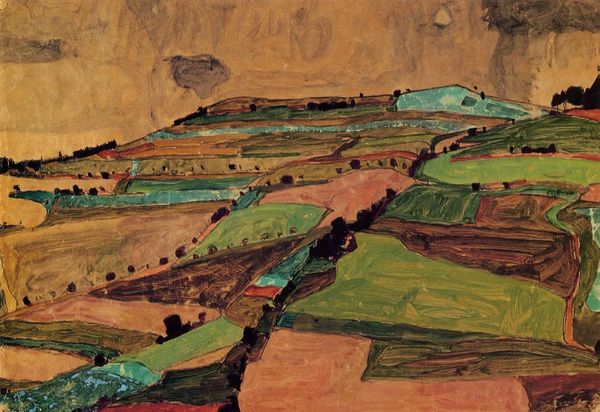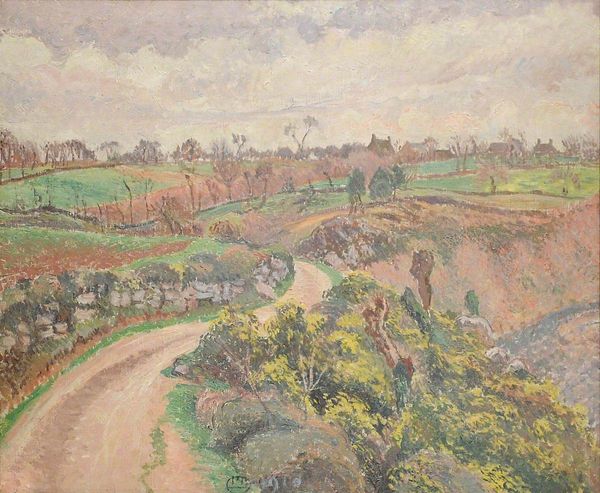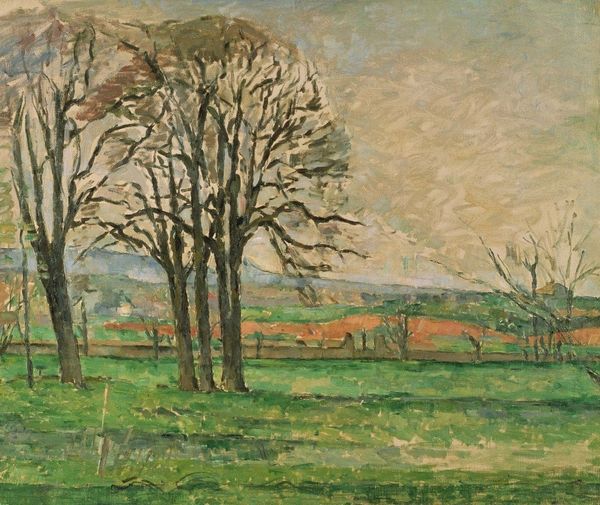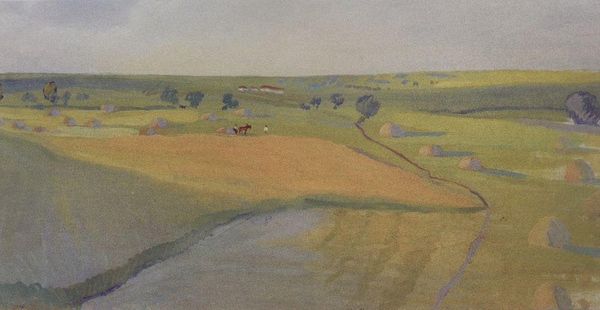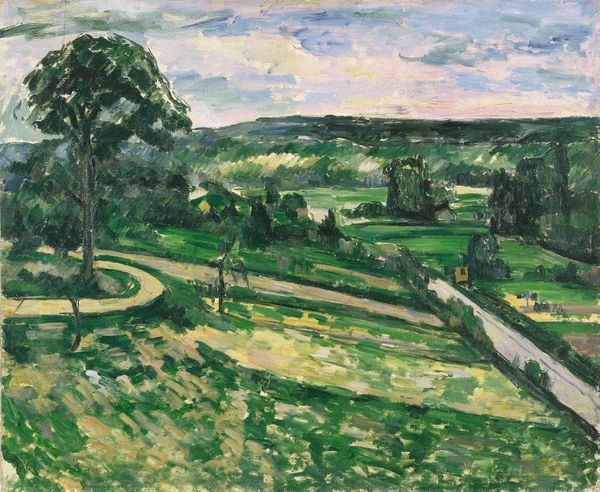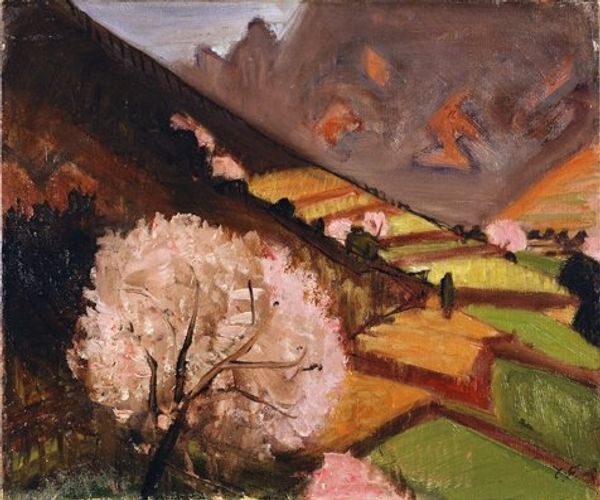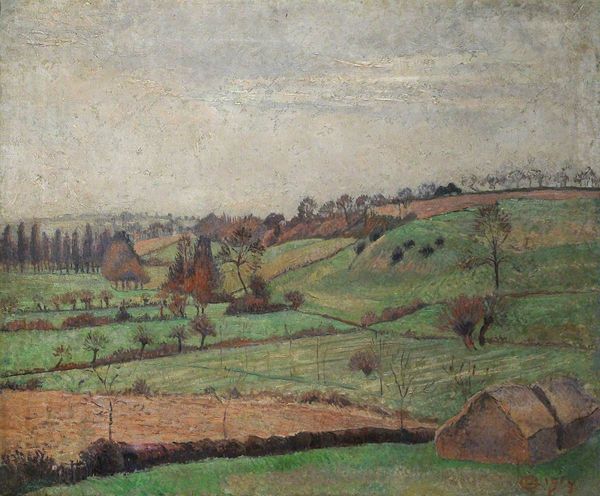
Copyright: Public Domain: Artvee
Curator: Let’s take a look at Walther Gamerith's “Felder Am Mattsee” from 1937, a watercolor painting capturing a field near Mattsee. The scene stretches out before us with trees clustered in the foreground. Editor: There's something very delicate and fleeting about it. The muted colours lend a dreamlike quality; the kind of scenery you glimpse out the train window and want to hold onto forever. Curator: The handling of watercolor speaks volumes, right? Look how the paint almost floats on the paper, layering to suggest the fields' patchwork texture. It's clearly *en plein air*, a direct response to the landscape. It highlights Gamerith's deep engagement with materiality; think about his decisions regarding paper, pigment choices, and brush strokes, each contributing to its atmospheric effects. Editor: Yes, and in terms of affect, for me that atmospheric quality evokes a strong feeling of melancholy, like a soft-edged memory. I feel I've been there before, or perhaps just dreamt it. It’s hard to believe such serenity existed on the eve of war. Curator: Indeed. But consider the socio-economic context. Even peaceful landscapes conceal agricultural labor and land ownership. Watercolors were frequently utilized for quick studies and mass produced for commercial distribution during this era. To really see, we can look at how Gamerith balances art's accessibility and his own artistry, turning work into art. Editor: That's interesting because I get the sensation that Gamerith sought something beyond merely a replication of a scene. It goes further, perhaps it captures something of a collective spirit and nostalgia for an older time just at the edge of obliteration. Curator: I agree it feels both of and apart from its moment, blurring into universality. Thinking about process here illuminates just how much intention—conscious or otherwise—shapes our viewing experience, as does Gamerith’s personal inflection in material exploration. Editor: Well, it makes you think about how materials contain a latent power of social reflection while also embodying their most raw essence through transformation—earth and water made into art—what could be more universal than that?
Comments
No comments
Be the first to comment and join the conversation on the ultimate creative platform.
